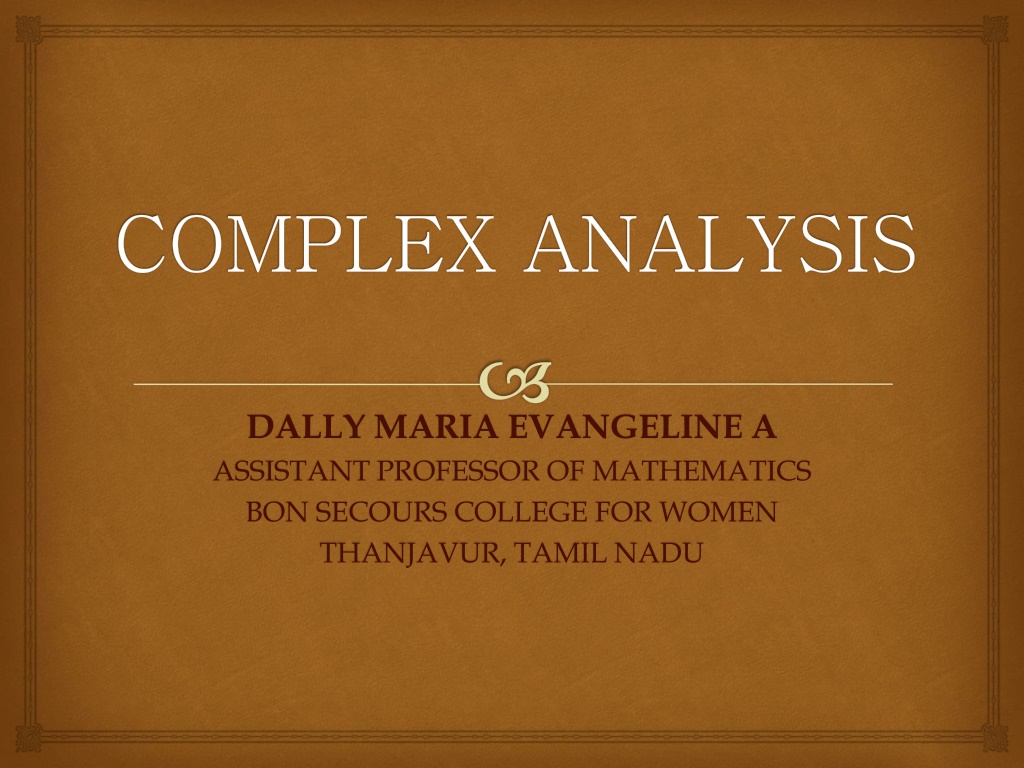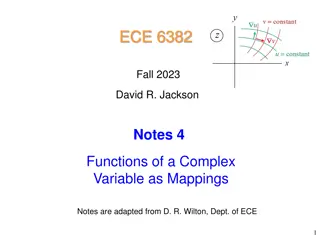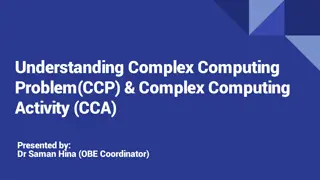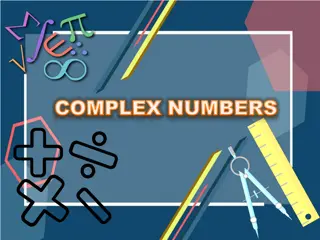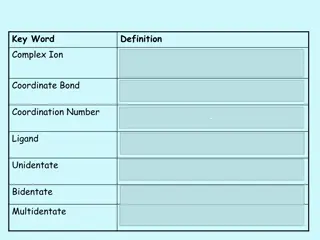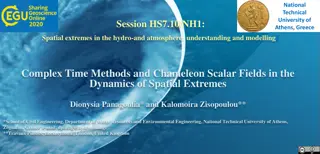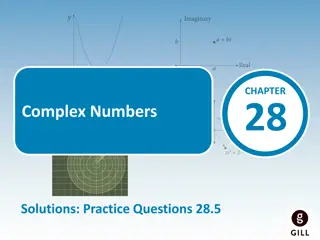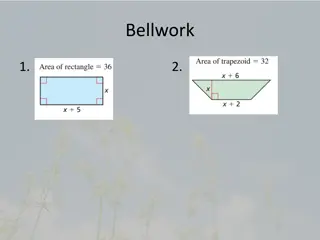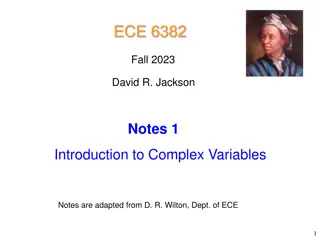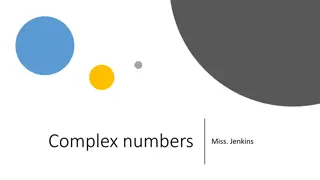COMPLEX ANALYSIS
Complex analysis explores the properties and behavior of complex functions and numbers. Topics covered include functions of complex variables, limits, continuity, and differentiability. Understanding concepts like the Cauchy-Riemann equation is crucial in studying complex valued functions. This field offers insights into diverse mathematical applications and is essential in various branches of science and engineering.
Download Presentation

Please find below an Image/Link to download the presentation.
The content on the website is provided AS IS for your information and personal use only. It may not be sold, licensed, or shared on other websites without obtaining consent from the author.If you encounter any issues during the download, it is possible that the publisher has removed the file from their server.
You are allowed to download the files provided on this website for personal or commercial use, subject to the condition that they are used lawfully. All files are the property of their respective owners.
The content on the website is provided AS IS for your information and personal use only. It may not be sold, licensed, or shared on other websites without obtaining consent from the author.
E N D
Presentation Transcript
COMPLEX ANALYSIS DALLY MARIA EVANGELINE A ASSISTANT PROFESSOR OF MATHEMATICS BON SECOURS COLLEGE FOR WOMEN THANJAVUR, TAMIL NADU
Complex Number A complex number z is an ordered pair (x, y) of real numbers x and y. ? ?,? = ? + ?? ?? ? = ? ???? ???? ,?? ? = ? ????????? ???? ??? ?2= 1 ?.?.,? = ? + ?? = ? + ?? ? = ? ??? ? = ? For z = ? + ??, If x = 0 then z = ?? ???? ????????? If y = 0 then z = x (purely real) 1 (????????? ????)
FUNCTIONS OF A COMPLEX NUMBERS Let us denote a complex valued function of a complex variable as w = f (z). In general, if u (x, y) and v (x, y) are real valued functions of two variables both defined on a region S of the complex plane then f (z) = u (x, y) +i v (x, y) is called a complex valued function defined on S. Each complex function w = f (z) can be put in the form w = f (z) = u (x, y) +i v (x, y).
LIMIT OF A COMPLEX VALUED FUNCTION Let w = f (z) be a function defined in some region containing a point ?0. If z approaches ?0 the value f (z) arbitrarily close to complex number l. A function w = f (z) is said to have the limit las z tends to ?0if given ? > 0 there exists ? > 0 such that 0 < |? ?0|< ? ? ? ? < ?.
CONTINUITY OF A COMPLEX FUNCTION Let f be a complex valued function defined on a region D of the complex region. Let ?0 ?. Then f is said to be continuous at ?0 if lim ? ?0? ? = ? (?0) Then f is continuous at ?0 if given ? > 0 there exists ? > 0 such that 0 < |? ?0|< ? ? ? ? (?0) < ?.
DIFFERENTIABILITY Let f be a complex function defined in a region D and let z ?. Then f is said to be differentiable at z if ? ?+ ?(?) ??and is called the derivative of f (z) at z. exists and is finite. This limit is denoted by f lim 0 (z) or?? The function is said to be differentiable in D if it is differentiable at all points of D. Example: The function f (z) = ?2 is differentiable at every point and f (z) = 2 z.
CAUCHY-RIEMANN EQUATION If f (z) = u (x, y) + i v (x, y), then Cauchy- Riemann condition is given by ?? ??= ?? ?? ??? ?? ??= ?? ??. Complex for of C-R equation: ??= ??? Polar form of C-R equation: Let f (z) = u (r, ) + i v(r, ) be differentiable at z = ????. Then ?? ??= ? ? 1 ?? ?? ??? ?? ?? = -1 ?? ??.
ANALYTIC FUNCTIONS A function f defined in a region D of the complex plane is said to be analytic at a point a ? if f is differentiable at every point of some neighborhood of a. Thus f is analytic at a if there exists ? > 0 such that f is differentiable at every point of the disc S(a, ? ) = z. If f is analytic at a point a then f is differentiable at a. Sufficient condition for a function to be analytic: If f (z) is analytic at a point then f (z) has derivatives of all orders at that point.
HARMONIC FUNCTION ?2? ??2+?2? Laplace equation: ?2? ?,? = ??2= 0 Let u (x, y) be a function of two real variables x and y defined in a region D. u (x, y) is said to be a harmonic function if?2? ??2+?2? ??2= 0. Let f = u + i v be an analytic function in a region D. Then v is a harmonic function of u if and only if u is a harmonic conjugate of v.
